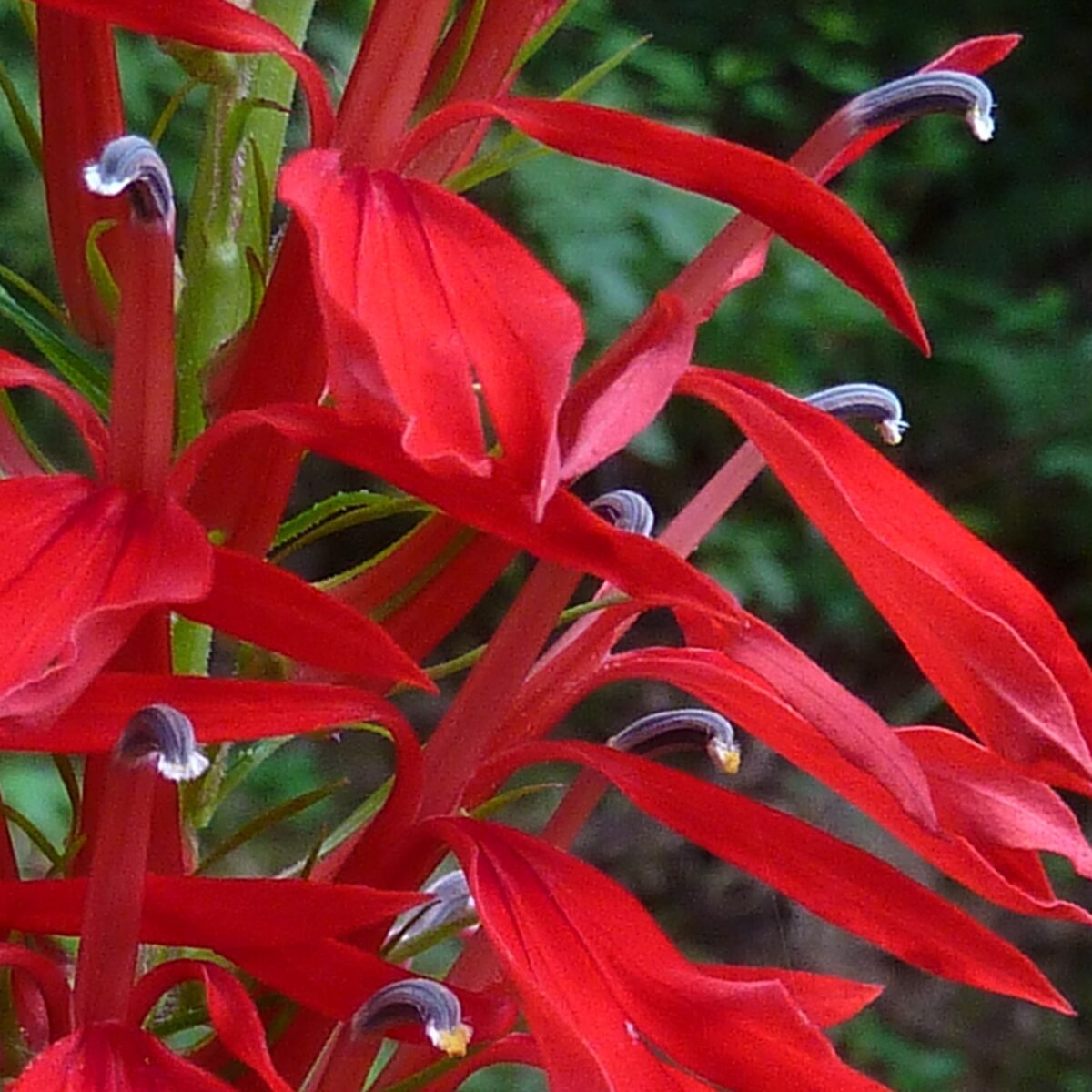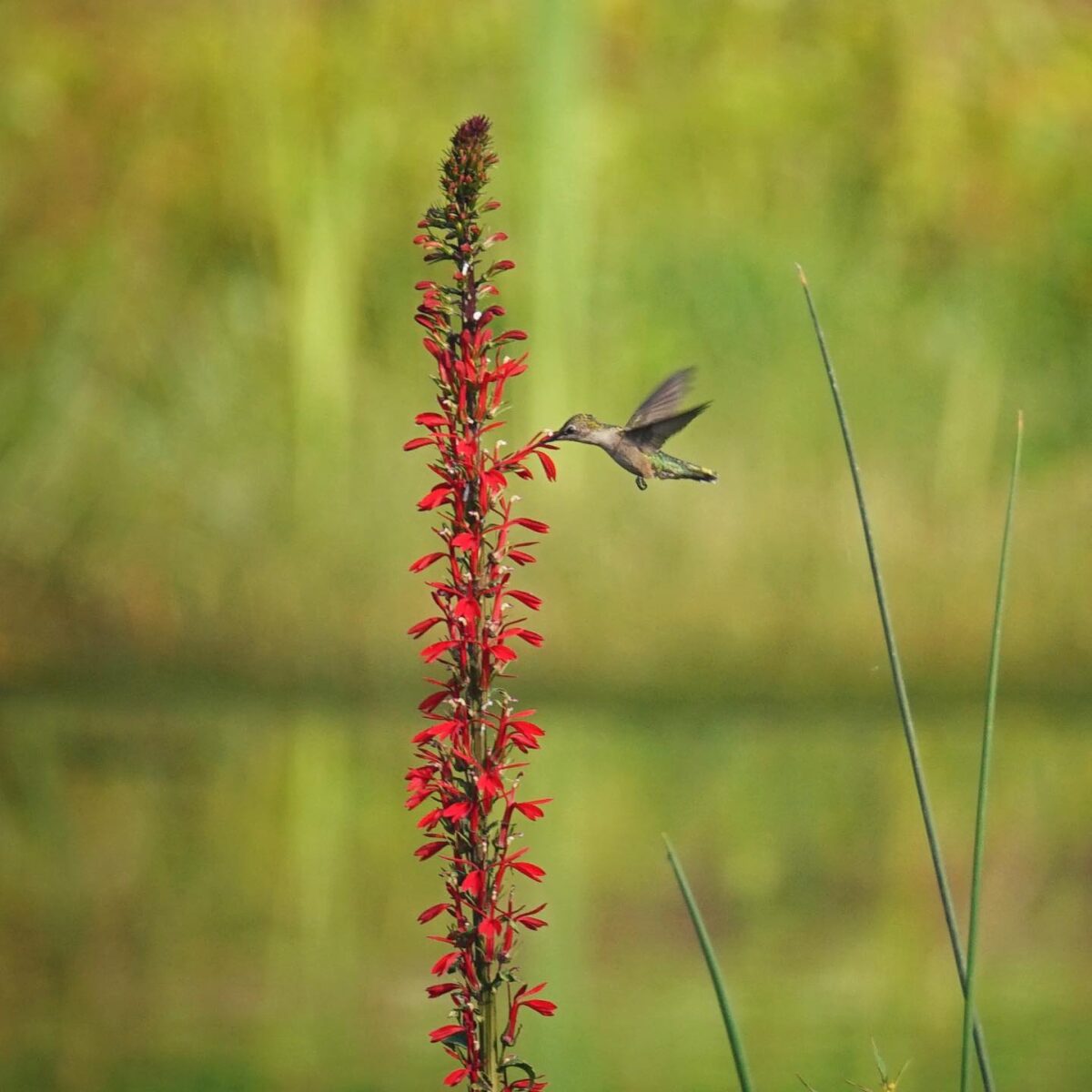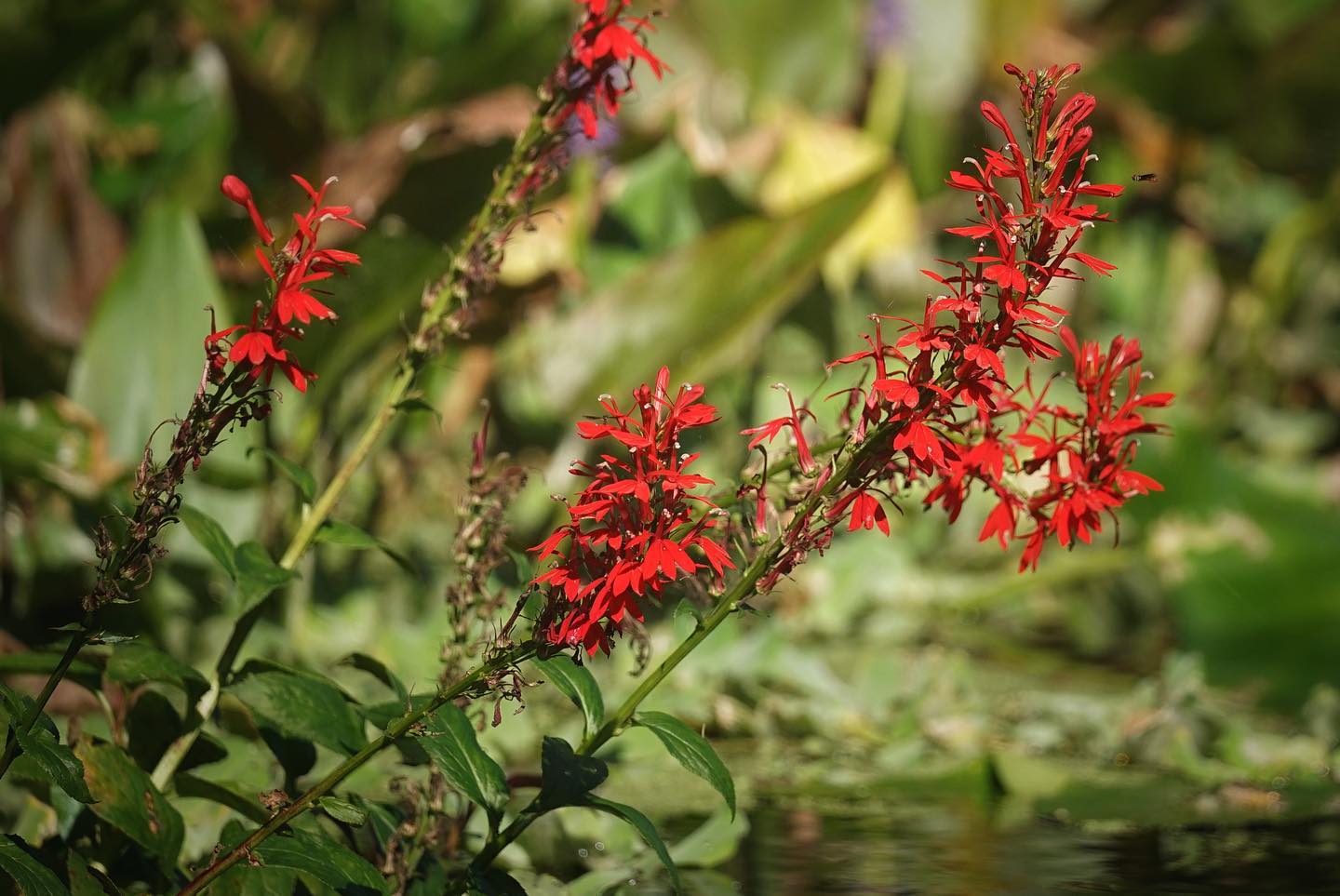Cardinalflower
Pictured above: Cardinalflower (Lobelia cardinalis) by Emily Bell. Click on terms for botanical definitions. View post as a PDF.
Cardinalflower is an erect perennial herbaceous wildflower that occurs naturally in floodplain forests, riverine swamps, spring runs and along river and stream edges. In Florida, it is a threatened species. Its stunning scarlet flowers bloom in summer through early winter. Hummingbirds are the primary pollinator, but the flowers also attract butterflies and bees.
Cardinalflower’s brilliant red blooms are are tubular and two-lipped, with wide-spreading petals that appear lobed, but are actually fused. They are born in terminal spikes and bloom from bottom to top. The plant generally dies back to a basal rosette in winter. Leaves are deep green (sometimes with a reddish tinge) and elliptic to lanceolate. They have serrate margins and are alternately arranged. Stems are pubescent. The plant exudes a milky sap when broken. Seeds are born in small capsules.


The common name Cardinalflower has been in use since the mid-1600s and is likely derived from the flower’s similarity to the robes worn by Catholic cardinals.
Family: Campanulaceae (Bellflower family)
Native range: Panhandle, north and central peninsula
To see where natural populations of Cardinalflower have been vouchered, visit florida.plantatlas.usf.edu.
Hardiness: 8A–10B
Lifespan: Perennial
Soil: Moist to wet, acidic/organic poorly drained soils
Exposure: Full sun to partial shade
Growth habit: 2–5’ tall
Propagation: Seed, division
Garden tips: Cardinalflower is great for moist wildflower gardens, water gardens and along edges of ponds, streams and drainage depressions.
Caution: All parts of this plant are believed to be toxic if ingested.
Cardinalflower is often available at nurseries that specialize in native plants. Visit PlantRealFlorida.org to find a native nursery on your area.
Learn more about Cardinalflower from the Florida Native Plant Society and the Institute for Regional Conservation.
For more information on other Lobelia species, see these resources:

